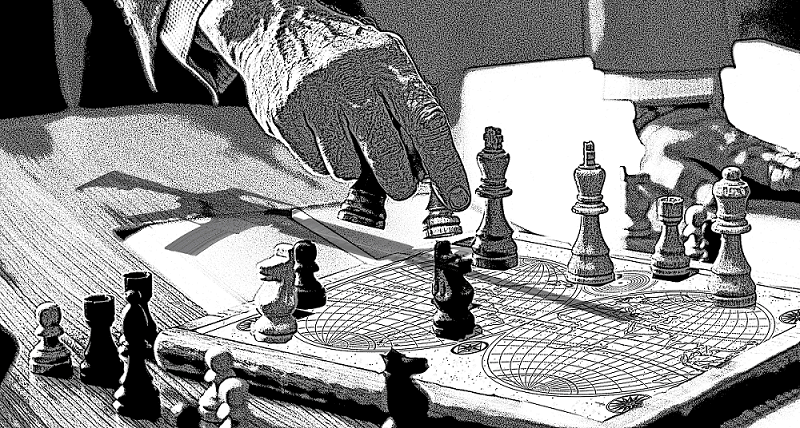Table of Contents
Dragon Sicilian defense
The dragon Sicilian defense is one of the most aggressive chess openings that exist. One of the best opportunities with black to gain the advantage quickly, and the favorite of many grandmasters to play for a win.
The Dragon Sicilian tends to result in great battles to get the initiative quickly, fast attacks. If highly tactical chess openings are for your liking, you have to know the Sicilian dragon.
The dragon also has its myths, many masters say the one who starts playing the dragon can’t stop. However, there are many variations in which you reach positional and quiet positions that are not that for attacking.
But using this opening will allow you to have tactical positions against white, you have very active pieces. Although many people think that the Sicilian defense is super complicated, out of traps you are alright.
You can perfectly play the dragon, always aware of traps, and still follow a certain configuration of pieces. If you want to learn how to play the Dragon Sicilian defense like a grandmaster keeps reading this post.
Main lines in the Dragon Sicilian defense
We have to know that the first moves to reach the Dragon Sicilian defense are the following:
1 e4 c5 2 Nf3 d6 3 d4 cxd4 4 Nxd4 Nf6 5 Nc3 g6
This is the main position of the Dragon Sicilian, and White has many ways to play in here. Lots of theory has been developed around these variations, but we will go over the main lines.
We are also going to provide you a setup that you will be able to use against pretty much any line white chooses. Here we have the following two main moves:
- 6 Be3
- 6 f3
Although you can transpose to the same positions with f3 later, Be3 is the main move here, so let’s continue:
6 Be3 Bg7 7 f3
7 f3 It’s important because white prevents the annoying 7… Ng4 move by black. If white plays 7 Qd2 Ng4! Is annoying for him. The bishop on e3 is pretty important for white, usually, he will aim to exchange it, an idea that we will see later.
7… O-O
Now white has three main options here:
- 8 Qd2 is the most typical
- 8 g4 The most direct idea
- 8 Bc4 The Fischer attack that has been unused for some time but is still interesting
- If white goes for 8 Qd2 you should definitely play 8… Nc6, Bd7, and Rc8. That will be your main focus on this opening, don’t overcomplicate things.
- To 8 g4 play 8… h5, and stop white’s ideas to play g5 quickly, you need to watch that.
- To 8 Bc4 you can play the same Nc6 and molest the c4 bishop quickly with Ne5, but white will usually play Bb3 before you can do that.
Now that we know the main positions we can move onto the main ideas of the opening, and the possibilities you have.
Typical ideas in the Dragon Sicilian defense

There are many ideas of the opening that you can use, and there are different ways to achieve the advantage in your favor.
One of them is to play d5 early in the opening, which is possible after whites play 9 O-O-O, 9… d5!
10. exd5 Nxd5 11. Nxc6 bxc6 12. Nxd5 cxd5 13. Qxd5 Qc7 14. Qxa8
Bf5 15. Qxf8+ Kxf8 16. Rd2 Qb8 17. b3 e6 Advantage for black.
You have to be aware of white playing f4 too early in the opening, usually is not a good idea to do that. However, against an inexperienced player, you may fall into the trap, in all Sicilians, you need to be careful with the e5 advance.
You can stop it by playing Qc7, Nd7, or even Ned7.
You will always want to have a setup in which you have a rook on c8, another one on a8 to advance a5-a4-a3. Also, a knight on e5 to disrupt on c4 is a good idea, you can also maneuver Ned7-b6-c4, while you have a rook on c8.
This will enforce whites to give up their pair of bishops or win the c4 bishop, which is important to control.
Just so you have an idea, in the dragon Sicilian defense white will try to win advantage by advancing g4-g5 and h4-h5-h6. You need to be prepared, how to play these positions will totally depend on how your opposite king's position knowledge.
Usually, the one who attacks first wins, so you will have to strive for quickness. However, in most practical cases white reaches in first, so you will have to be prepared for that, you have two options:
- Prepare for white’s attack and defend it so you try to achieve a favorable endgame
- Go on for an attack by yourself in which you will have to sacrifice and calculate a lot.
Choose accordingly to your playstyle or what you feel comfortable with the most.
Typical positions for pieces in the Dragon Sicilian

Better than knowing the theory is best to know the positioning of the pieces and the different plans there are. This is why we will make an overall of these two topics:
The best pieces of the openings are:
- The g7 bishop is a fundamental attacking and defensive piece in the long term
- The f6 knight is super important to block the h-pawn advance by Nh5 at some point
- The c8 rook has many ideas to sacrifice on c3, weakening white’s castle and central control.
Normally the plans you can follow are:
- Advancing the b-pawn or a-pawn to open files, but can result in a bit of slow
- Sacrificing on c3 when you believe is best, and attack white’s castle
- Exchanging the c4 bishop (in case there is one) and with your white-squared bishop on e6 attacking the a2 pawn.
Which plan to follow will depend on the specific dragon Sicilian defense position, but these are key ideas that may help you.
You may also like:








